While the Trump administration has been preoccupied with its trade war with Beijing, Beijing has adopted a two-pronged approach to bolster its own position in the Indo-Pacific region: pushing harder against those in the region that challenge China’s sovereignty claims, while pulling its stalwart partners and so-called swing states closer into its orbit. China has been steadily advancing its territorial claims along its periphery without eliciting much discernible pushback from the Trump administration. As Brookings scholar Lynn Kuok has noted, China in April “made its first on-the-ground, formal assertion of sovereignty over a previously unoccupied land feature in the South China Sea in more than a decade.” Meanwhile, Beijing has continued to ramp up pressure on Taiwan—most notably during its Strait Thunder-2025A exercise in April. These activities are likely designed to establish a “new normal” for Beijing’s coercive activities during the Trump administration. Simultaneously, China has pursued a “charm offensive” with friendly countries and so-called swing states in Southeast Asia.
From Beijing’s perspective, there are a number of compelling reasons to pursue this two-pronged strategy. President Donald Trump and his top foreign policy officials are utterly distracted by their multifront trade war, strikes on Iran, and their quixotic efforts to resolve the conflicts in Ukraine and the Middle East. The dearth of bandwidth at the top is compounded by the lack of staffing to address Beijing’s subtle salami slicing. Moreover, Chinese Foreign Minister Wang Yi told his European Union counterpart in July that Beijing was worried that the United States would turn its full attention to China and the Indo-Pacific after the end of the Ukraine war, an assessment that would only give additional impetus to Beijing to consolidate its position in the region sooner rather than later.
Meanwhile, the Trump administration’s punitive and erratic tariff policy provides an opening for China to make headway with countries in the region at very little cost. To the extent that the administration has focused on China, its myopic focus on trade and technology issues seems to have distracted it from pushing back on Beijing’s coercive activities against U.S. allies and partners, leaving China with the space necessary to press forward on its periphery. The prospect of an in-person meeting this year between Trump and President Xi Jinping is only likely to further dampen the administration’s response to further provocations by Beijing against U.S. allies and partners in the region. Already, the Trump administration has blocked Taiwan’s President Lai Ching-te from transiting New York to avoid irritating Beijing.
So far, the Trump administration’s response—or conspicuous lack thereof—would give Beijing little reason to change course. In fact, Washington’s silence is likely to invite further intensification of both China’s coercive activities and its efforts to woo the region in the coming year, allowing Beijing to enhance its strategic position at the U.S. expense. So far, Beijing’s approach is proving rather effective—and Beijing is poised to reap further gains this year if the administration devotes more time to pressuring U.S. allies and partners in the region than actually supporting them.
Fortifying the periphery for Trump 2.0
One week after Trump’s tariff hikes on April 2, Xi and the Politburo Standing Committee convened an unusual Central Conference on Work Related to Neighboring Countries. The events of the preceding weeks largely overshadowed this conference in Western press coverage, but it would have been a crucial forum for Xi to lay out his game plan for girding China’s position in Indo-Pacific for the second Trump administration. This conference was unlikely to have been orchestrated in response to the Trump administration’s Liberation Day tariffs on April 2, since this type of central conference involving Xi and the Chinese Communist Party’s top leadership typically takes months of behind-the-scenes preparations, but it was probably designed to provide a venue for Xi to promulgate updated guidance for how to handle the region during the second Trump administration.
The last time Xi held a similar work conference was in October 2013, just after he became the top leader—and shortly before China pivoted to a more assertive approach to its sovereignty claims in the South China Sea. In hindsight, this conference was an early portent of Xi’s shift away from the “hide and bide” foreign policy that had governed China’s foreign policy since the wake of the Tiananmen crackdown. China’s “periphery” has been a key part of its foreign policy since 1987, when the concept of “peripheral environment” appeared for the first time in The People’s Daily. Xi’s 2013 conference only elevated the concept’s importance. The most recent conference in April further augmented the role of peripheral diplomacy in China’s overall foreign policy, since Beijing gave the conference an upgraded protocol status. In his speech, Xi noted that China and its neighbors must “deepen development integration, build a high-level interconnection network, and strengthen industrial chain and supply chain cooperation,” likely in the face of Trump’s tariffs.
A charm offensive on the cheap
Days after the conference, Xi called Indonesian President Prabowo Subianto on the 75th anniversary of China-Indonesia relations, and then embarked on a notable tour of Cambodia, Malaysia, and Vietnam.1 The following month, in May, Premier Li Qiang—a close Xi ally whom Xi has entrusted with more responsibility than Li’s predecessor—visited Indonesia and met with Prabowo. He also attended a summit between the Association of Southeast Asian Nations (ASEAN), China, and the Gulf Cooperation Council in Malaysia at Malaysian Prime Minister Anwar Ibrahim’s invitation. Malaysia, Vietnam, and Indonesia are some of the key “swing states” in Southeast Asia, commonly known for hedging between the great powers as the competition has unfolded. Xi deliberately targeted these neighboring states by making them his first foreign visit after the U.S. tariffs were imposed. Not only do these countries have deep trade relations with China and a demonstrated track record of supporting Chinese companies during the first trade war, but they are also appreciative of free trade policies. After the United States pulled out of the Trans-Pacific Partnership and enacted protectionist policies during the first Trump administration, these Southeast Asian states began to see China as the preeminent economic power in the region. Beijing is recapitulating its playbook from the first trade war by capitalizing on this moment of increasing U.S. protectionism to posture as these states’ most reliable economic power.
For its own sake, Beijing wants to strengthen its trade relations with these countries to bolster its ability to withstand Trump’s tariffs as the trade war potentially intensifies. Beijing is specifically targeting ASEAN countries to build up a new market for its exports. Since January, China has not advanced significant new initiatives in the region, like new large-scale infrastructure funds, beyond the largely symbolic gestures of head of state visits and the signing of new memorandums of understanding.2 Indeed, the Chinese leadership’s official assessment at its April conference was that, “at present, China’s relations with neighboring countries are at their best in modern times.” Given that favorable assessment, Beijing likely judges that it does not need to offer much more to pull countries closer. Xi’s penurious policy also reflects his likely calculation that the United States is in the middle of making mistakes in managing its allies and partners in the region and does not want to expend any resources wooing them until the dust has settled.
Probing at Sandy Cay
Beijing’s charm offensive is only part of the story in its approach to Southeast Asia. Beijing almost always tests new U.S. administrations’ commitment to its allies and partners in the region during the first year, so the real question was not whether but when Beijing would make a move. China’s assertion of sovereignty over Sandy Cay in April looks like just such an opening gambit. Notably, China’s move came just weeks after Secretary of Defense Pete Hegseth visited the region and demonstrated remarkable continuity with previous administrations by reiterating the United States’ “ironclad commitment” to the Philippines alliance. Shortly after that visit and just ahead of Balikatan 2025—the annual, major joint military exercise between the Philippines and the United States—the Chinese Coast Guard unfurled a flag on Sandy Cay in the northern Thitu Reefs of the Spratly Islands in the South China Sea. Although this move did not create new facts on the ground—indeed, the Philippines responded in kind a week later—it laid the groundwork for Beijing to make bigger muscle movements not just at Sandy Cay but also around nearby Thitu. As Kuok points out, Thitu lies so close to Sandy Cay that their territorial seas overlap, meaning that a Chinese claim to Sandy Cay introduces a competing claim into the waters around Thitu.
China’s move was notable, especially since it is not clear what provoked Beijing’s actions. This year’s Balikatan exercise was actually smaller than it had been in recent years, and previously, the Chinese Coast Guard only responded through statements and an increased ship presence in the South China Sea.3 It is possible that some unreported incident on the water prompted Beijing’s action, but the situation at Sandy Cay seems similar to Beijing’s probing of the U.S. commitment to the Philippines early in the Biden administration. In March 2021, shortly after Biden’s inauguration, more than 200 Chinese vessels were moored at Whitsun Reef, a feature within a Philippines-claimed feature that is within its exclusive economic zone (EEZ). The Biden administration responded with a series of cabinet-level engagements with the Philippines, issued public and private statements that China’s actions near Whitsun Reef were “impeding the lawful rights” of the Philippines, and called on China “to stop using its maritime militia to intimidate and provoke.” The U.S. State Department spokesperson that month said the United States stands with the Philippines against the People’s Republic of China’s (PRC) maritime vessels near Whitsun Reef, and former National Security Advisor Jake Sullivan called his Philippine counterpart to discuss shared concerns. The following month, in April 2021, then-Secretary of State Antony Blinken called Philippines Foreign Minister Teodoro Locsin, Jr., to share concerns over China’s actions. The Chinese vessels dispersed over the ensuing weeks.
In the case of Sandy Cay, Beijing’s bet was well-placed. Three months after the incident in April, the Trump administration has registered little to no public response to the flag planting, beyond White House National Security Council Spokesperson James Hewitt initially saying, “The reports of China seizing Sandy Cay reef are deeply concerning, if true.” Beijing likely interpreted the lack of response on the water or comment from a cabinet-level official as a green light to keep pressing its claim. Indeed, just a month later, in May, China water-cannoned Philippine vessels operating in the vicinity of Sandy Cay. In late May and early June, during regular meetings with their Filipino counterparts, both Secretary of State Marco Rubio and Hegseth condemned Beijing’s destabilizing behavior in the South China Sea, but they did not specifically mention Sandy Cay. In fact, there was not even a single press release or press briefing comment regarding Beijing’s behavior. During Hegseth’s Shangri-La Dialogue speech at The International Institute for Strategic Studies in late May, he called out China’s harassment of its neighbors and made an overture to the ASEAN defense leaders in the audience: “China seeks to intimidate you in your own waters.” Most recently, Rubio made a statement on the ninth anniversary of the Philippines-China South China Sea Arbitral Tribunal Ruling, calling on China to abide by the 2016 ruling and “cease its dangerous and destabilizing conduct.” These comments would have been made regardless of Beijing’s recent actions in the South China Sea—and Beijing knows this. Beijing was trying to see if the United States would respond in any meaningful way to its salami-slicing behavior—and it did not.
Thunder in the Taiwan Strait
Although Beijing considers Taiwan part of China rather than its periphery, some of the same dynamics—particularly vis-à-vis the United States—seem to be animating China’s approach to the Lai administration. China is likely probing how hard it can pressure Taiwan under the Lai administration—which Beijing loathes—before eliciting a U.S. response. So far, the Trump administration has not had a discernible response to PRC activities in the Strait, even though Beijing has lowered its threshold for undertaking large-scale exercises around Taiwan over the past several years. Beijing’s push—and the lack of U.S. pushback—could result in Beijing establishing a new normal for its military activities around Taiwan during the Trump administration.
The most recent significant activity came in early April with the Strait Thunder-2025A exercise. This was one of Beijing’s largest exercises to date, with 135 aircraft sorties and more than 30 vessels surrounding the island. This exercise was on par with Beijing’s October 2024 Joint Sword-2024B exercise, which was just below the scale of the exercises after then-Speaker of the House Nancy Pelosi’s visit to Taiwan. Beijing launched Strait Thunder in response to the Lai administration labelling China a “foreign hostile force” and ramping up anti-espionage forces in mid-March.
Although the escalating tit-for-tat dynamic between China and Taiwan has a logic of its own, the possibility of a U.S. response is always part of Beijing’s calculation on Taiwan issues. Yet again, the Trump administration’s response to the exercises was minimal, with no public response from the Department of Defense and a one-line response from the State Department spokesperson, who said that “China’s aggressive military activities and rhetoric toward Taiwan only serve to exacerbate tensions and put the region’s security and the world’s prosperity at risk.” So far, the Trump administration has announced no arms sales in 2025, despite rumors of consideration within the administration, and instead has only issued demands for Taiwan to increase defense spending.
Conclusion
The Trump administration’s quiescence in response to the PRC’s regional provocations and diplomacy is actually a bit of a departure for the still-young administration. To its credit, the Trump administration in its first 100 days made some laudable early moves to send reassuring signals to allies and partners in the Indo-Pacific that were at odds with Trump’s tendency to see allies as more of a liability than an asset. These initial overtures included convening a Quad foreign ministerial meeting one day after Inauguration Day, followed by early visits from key regional partners like Japanese Prime Minister Shigeru Ishiba and Indian Prime Minister Narendra Modi. Notably, even as Vice President JD Vance was excoriating U.S. European allies at the Munich Security Conference in February, Rubio was holding a trilateral meeting with his Japanese and Republic of Korea counterparts. Hegseth’s aforementioned visits to the region likewise conveyed a reassuring message. Nevertheless, the administration’s preoccupation with wars in the Middle East and Europe and its view that allies and partners are more liabilities than assets likely blunted the effect of this initial diplomacy in the region.4
The tariffs unleashed on Liberation Day probably undid much, if not all, of the hard work that went into that initial—and still very much inchoate—regional diplomacy and gave ample room to Beijing to undermine allies’ faith in the U.S.’s reliability. Signs of unease among allies and partners in the Indo-Pacific are also already beginning to mount in response to the administration’s actions. Australia is anxious about the Trump administration’s announcement that it would review the trilateral Australia-U.S.-U.K. security initiative known as AUKUS, which comes on the heels of the Trump administration’s inactivity in the face of an unprecedented People’s Liberation Army Navy live-fire drill in the Tasman Sea near Australia in February. Trump again threatened to escalate tariffs to 25% against key allies South Korea and Japan in July because they would not acquiesce to his demands, prompting Ishiba to publicly muse about Japan’s need to wean itself from the United States in key areas. Beijing is indeed testing the new administration’s commitment to allies and partners in the region—and it has likely found the results to be reassuring.
It may not be too late for the administration to recalibrate Beijing’s expectations, but it will require more than just Hegseth attending the Shangri-La Dialogue—which in Southeast Asia is just table stakes. It will require focus and follow-through that so far have been lacking, as the trade war and international hotspots like the Middle East seemingly have consumed the Trump administration’s bandwidth. More recently, the administration, to its credit, hosted Philippine President Ferdinand Marcos for a series of meetings and reaffirmed the U.S. commitment to their mutual defense treaty in the South China Sea. But dissuading Beijing from further escalation will also require tangible actions such as continued arms sales to Taiwan, as well as Taiwan Strait transits and freedom of navigation operations in the South China Sea. The administration could also respond asymmetrically to Beijing’s provocations by employing its economic tools.
By themselves, these actions have never deterred China in the past and are unlikely to do so moving forward. But Beijing will interpret their absence in the wake of these provocations as a green light to keep salami slicing across the region. In the absence of U.S. pushback, the only limiting factors on Beijing’s coercion will be the twin dynamics of the region’s ingrained skepticism about Beijing and Beijing’s desire to preserve a façade of amity with its neighbors. It will take time to marshal other options for dealing with Beijing’s coercion, but in the meantime, a distracted Trump administration risks defaulting to a “reverse Roosevelt” in the Indo-Pacific by speaking loudly about U.S. power in the region and wielding a small stick.
-
Footnotes
- Xi has only visited Southeast Asia three other times since COVID-19 began, including Indonesia for the 17th G20 Summit, Thailand for the informal Asia-Pacific Economic Cooperation forum Leaders’ Summit, and Vietnam, where China and Vietnam elevated their relationship to a comprehensive strategic partnership.
- According to the official readouts of Xi’s visit, China and Cambodia elevated their relationship to an all-weather China-Cambodia community with a shared future in the new era and signed 37 memorandums of understanding (MOUs). China and Malaysia announced “the building of a high-level strategic China-Malaysia community with a shared future” and signed 26 MOUs. Finally, China and Vietnam held a launching ceremony for the China-Vietnam Railway Cooperation Mechanism and signed 45 MoUs.
- This year’s Balikatan was actually smaller than recent exercises, with 14,000 Filipino, U.S., Australian, and Japanese service members, plus observers from 16 countries—underscoring the disproportionality of China’s dramatic response. Around 17,600 participants took part in the 2023 Balikatan exercise, which was the largest joint drill in the Philippines’ history, but Beijing only verbally responded and deployed its navy to trail the exercise. Again, in the 2024 Balikatan, more than 16,000 troops, including Japanese and Australians, participated, which garnered the same response from Beijing as in 2023—verbal warnings and the deployment of People’s Liberation Army Navy ships shadowing the exercise.
- As the conflict between Israel and Iran deepened, the U.S. Navy also redirected an aircraft carrier from the South China Sea to the Middle East, and Trump himself left the G7 meetings early.
The Brookings Institution is committed to quality, independence, and impact.
We are supported by a diverse array of funders. In line with our values and policies, each Brookings publication represents the sole views of its author(s).


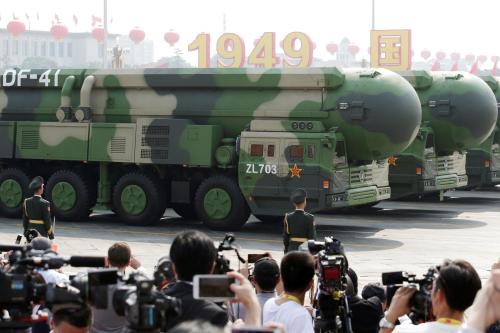
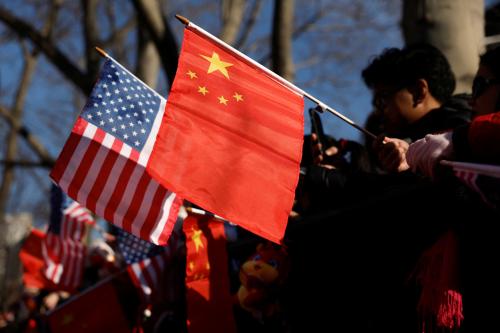
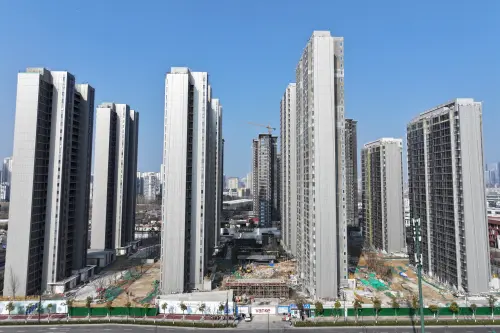

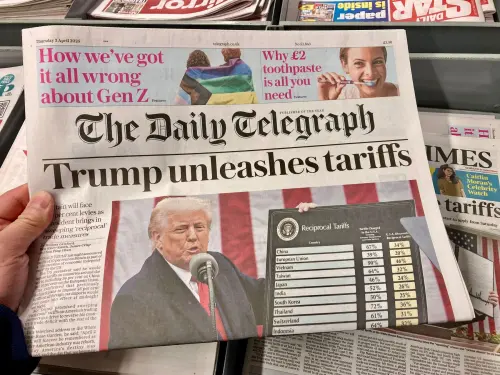
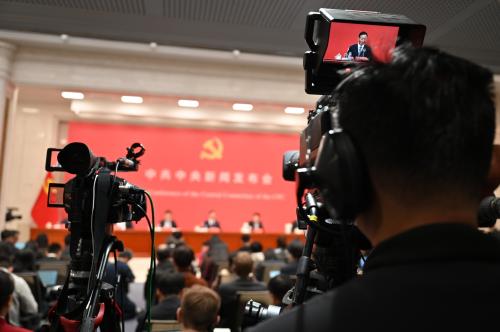
Commentary
Beijing bolsters its position in the Indo-Pacific with little US pushback
July 29, 2025